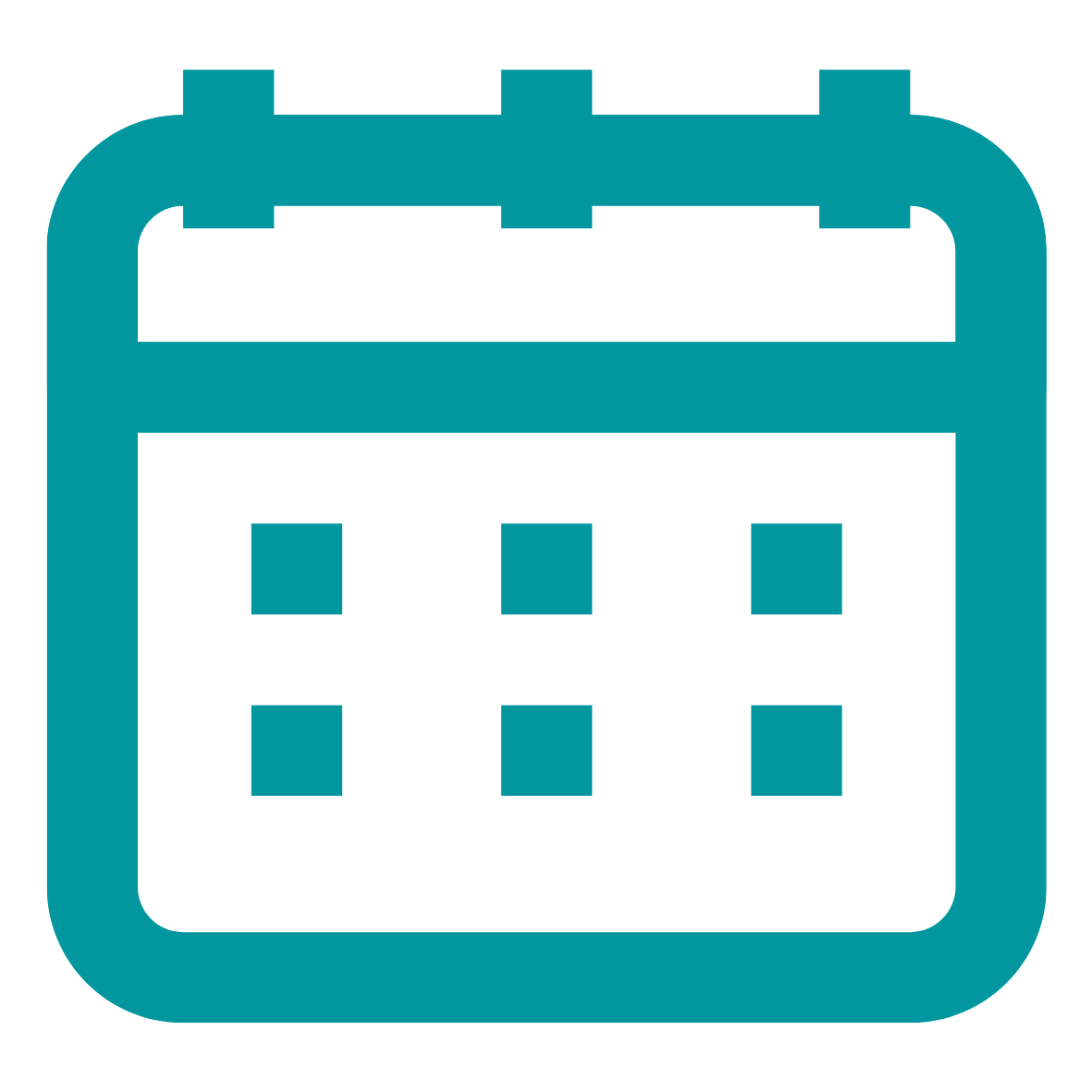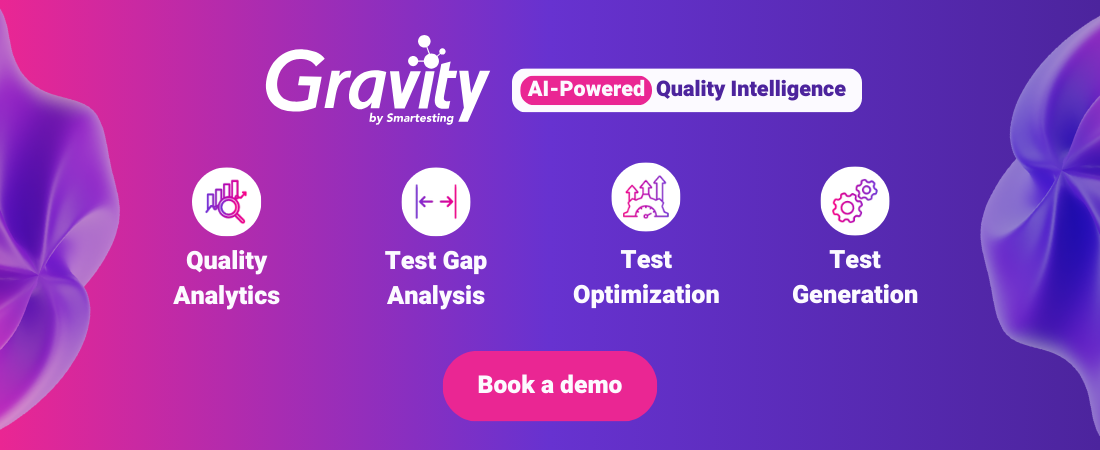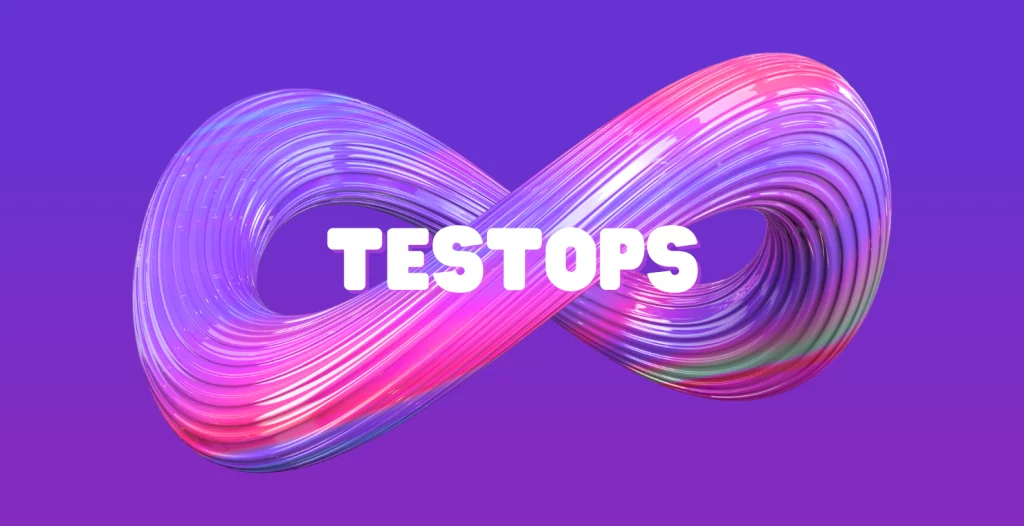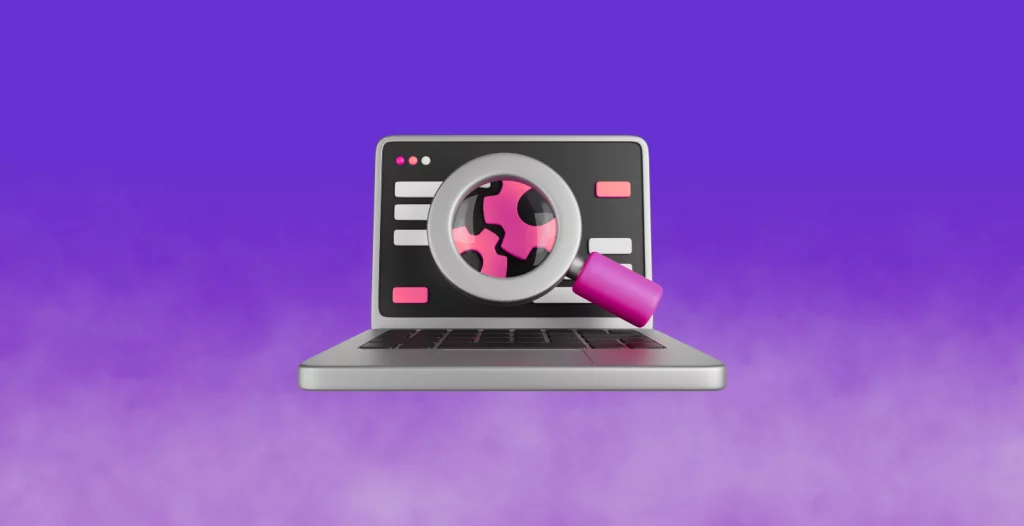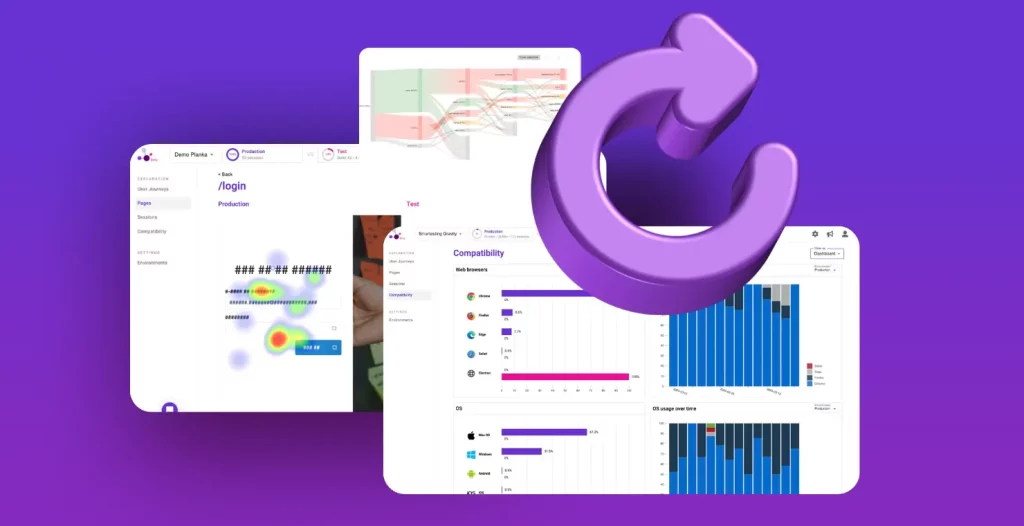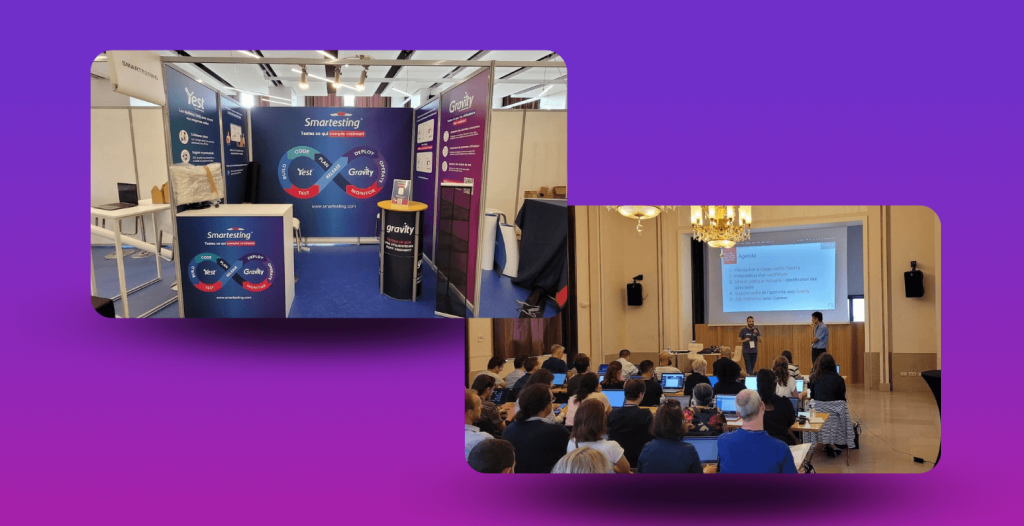
The JFTL “Journée Française du Test Logiciel / French day of Software Testing” is a gathering of professionals in software testing and the quality of information systems in France. This event takes place at the Beffroi de Montrouge in Paris. This 15th edition attracted over 1,200 participants and 40 sponsors and took place from 12 to 13 June.
The first day is reserved for tutorials. To enable the sponsors to present a technical aspect of software testing through hands-on practice. Participants attend these tutorials with their computers and follow the tutorial step by step. Here are a few examples of tutorials: “Discovering Cypress through practice”, “Introduction to API testing”, “Testing what really matters to our users” (ours!), “Test analysis: a structured approach”, etc.
The second day is dedicated to visiting the stands and attending the conferences.
Conferences are a good way for sponsors to present a test-related topic or provide feedback to a large audience. For example, our conference “How to well dimension our automated end-to-end test suite” was attended by almost 150 people! Other examples of talks include: “Gamification in the World of Testing.”, “Testing in a more distributed world.”, “My flaky tests are agile!”, etc.
Stands allow sponsors to present their products to event participants. Among the sponsors are Alten, Sogeti, Tricentis, Smartesting (that’s us!), Keysight, Expleo, etc.
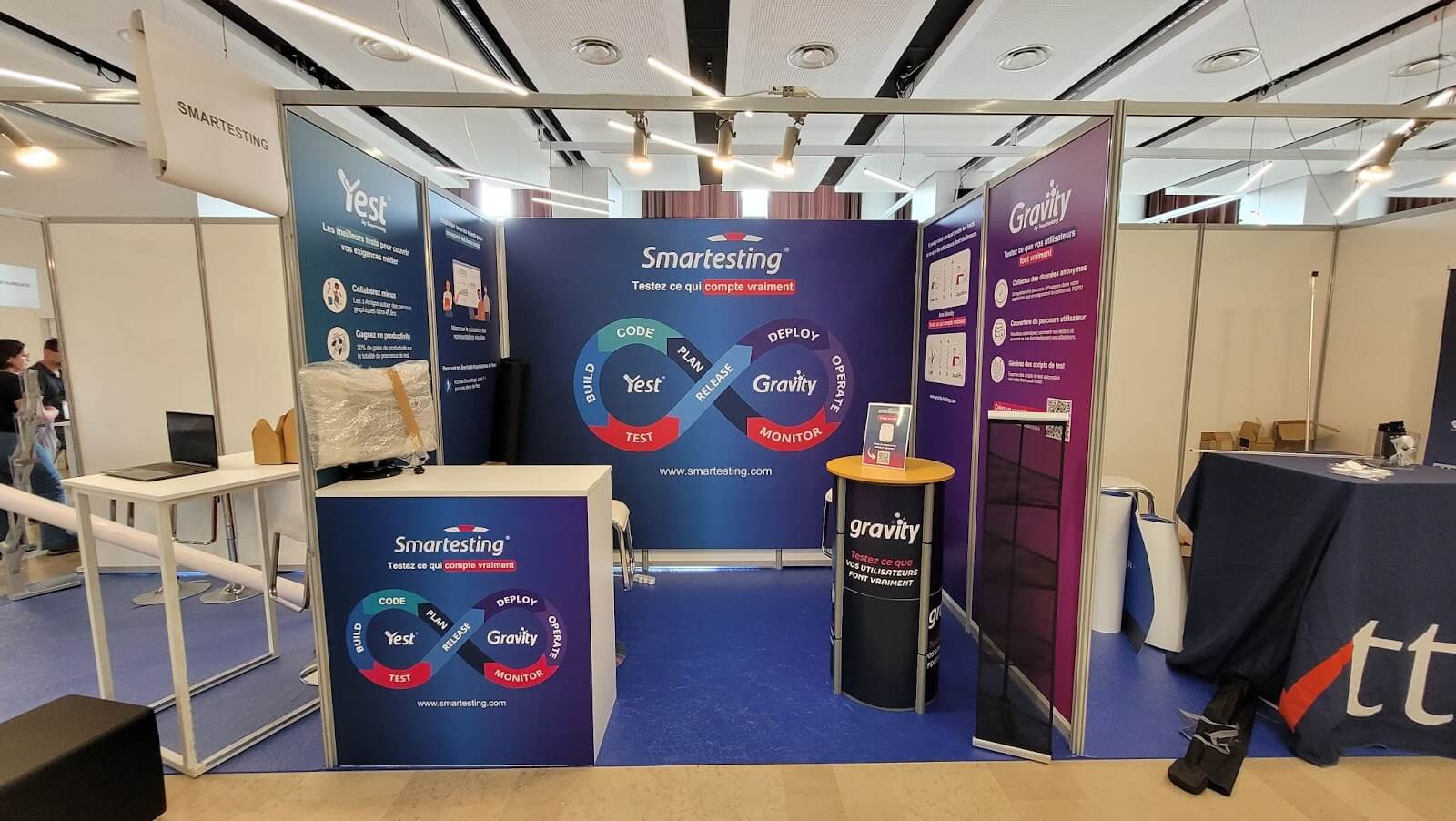
Yest and Gravity were in the spotlight on our stand.
This event was a good way for the sponsors to promote their products and present some aspects of software testing. It was an opportunity for participants to find out about the state of the art in software testing in France. But also to discover potentially interesting products for their professional needs!
The tutorial
Our tutorial entitled “Let’s test what REALLY matters to our users!” was presented by Julien Botella and Bruno Legeard. It took place on the first day of the JFTL from 2 pm to 5 pm.
There was a high level of interest in this tutorial, which attracted a total of 62 participants. (12 more than the second most attended tutorial.)
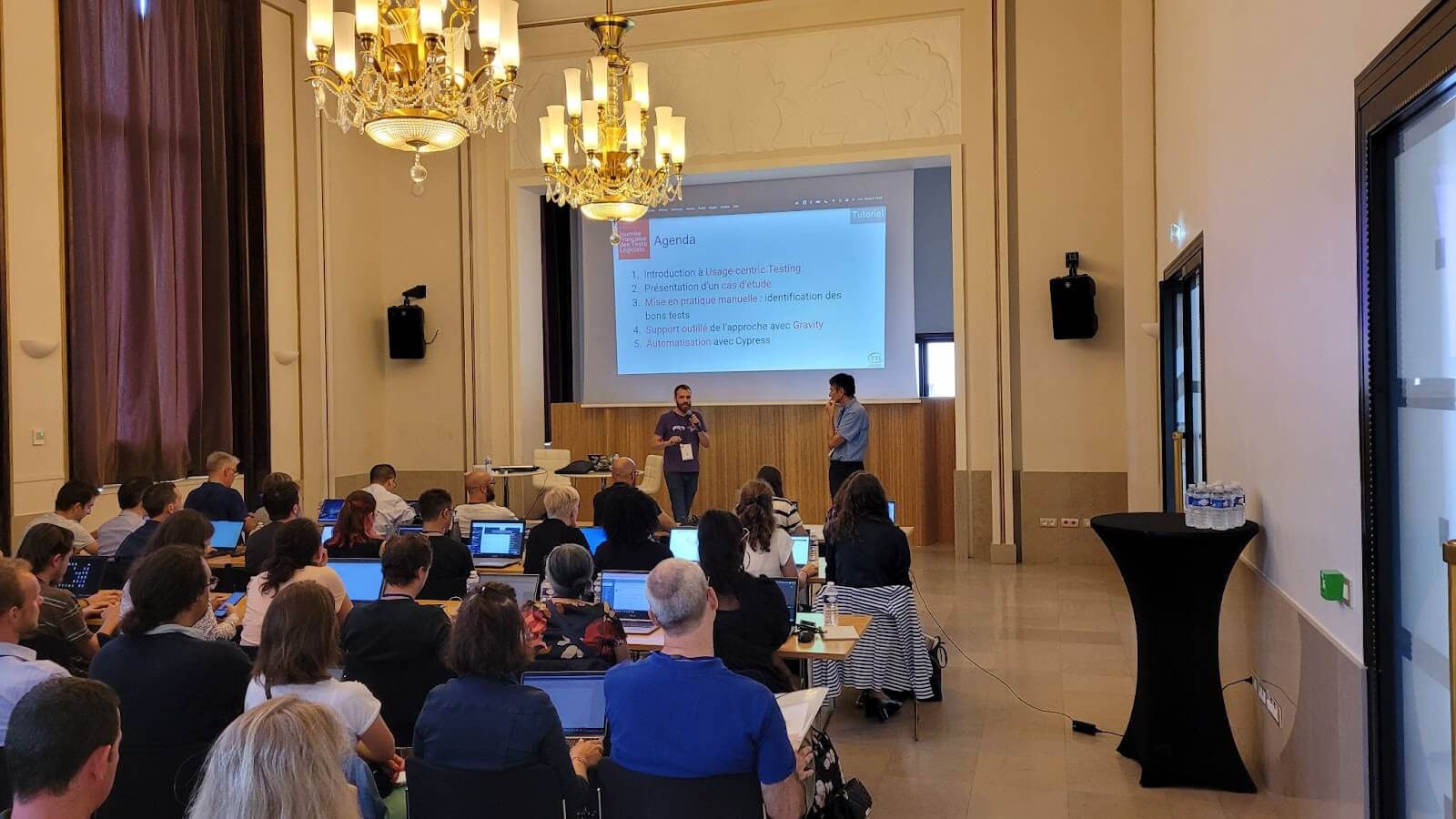
Julien began by introducing the team. Bruno then went on to talk about the challenges and priorities of test automation. He pointed out that automated tests are costly. Furthermore, they need to be optimally implemented to cover important user paths. He then concluded by asking the following question: “Could we better target our testing effort?”
A survey has been launched to find out more about the state of the art of automated testing. Here is a summary of the responses to the main questions:




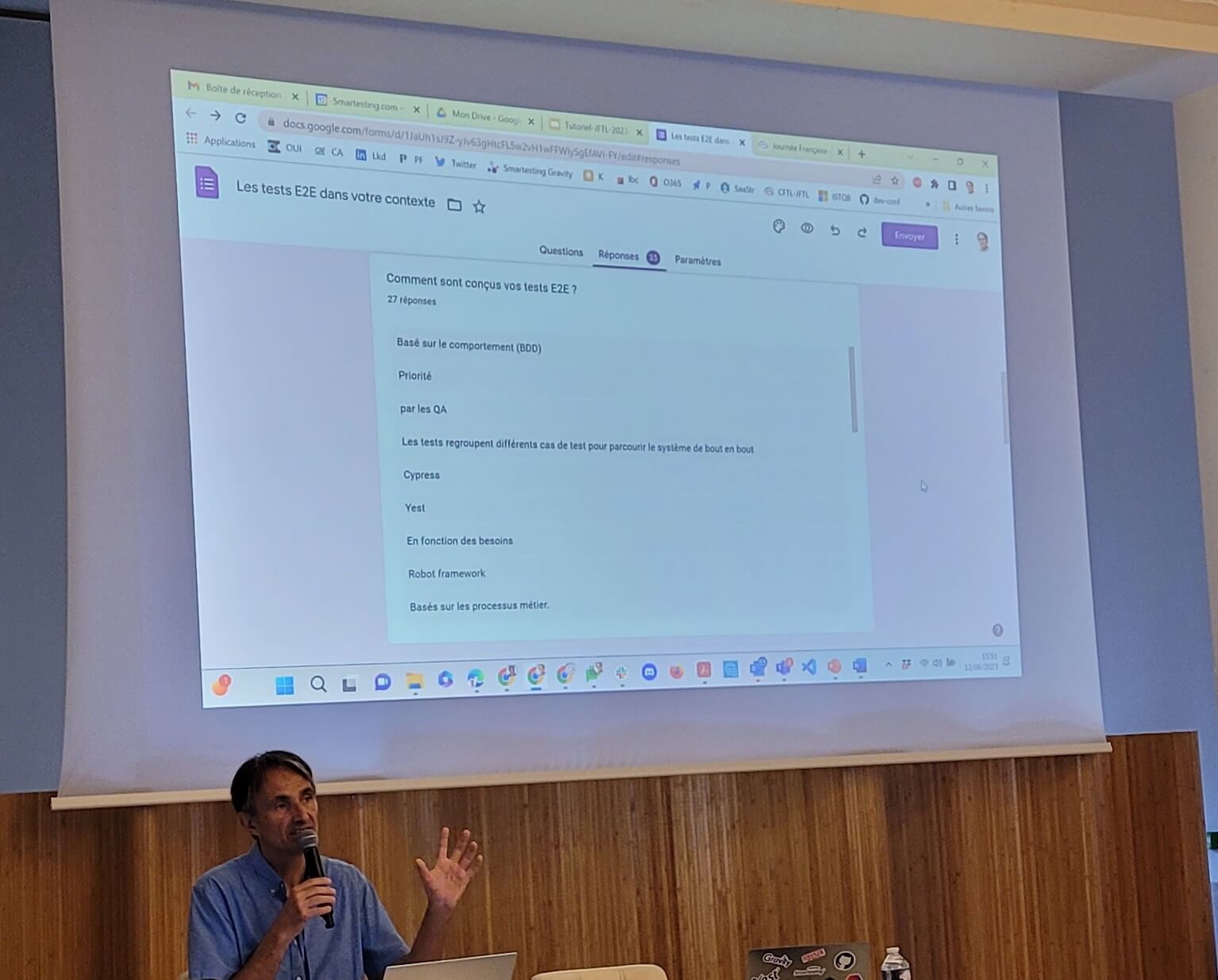
To continue, Bruno answered the question asked earlier by introducing the concept of Usage-centric Testing. In particular, this concept makes it possible to have automated tests covering the real usage of production users, to have better visibility of the coverage of this usage, and to be able to continuously adapt tests with usage.
There is the tester’s idea of the user journey, and then there is the actual user journey… The concept of Usage-centric Testing aims to test the actual user journey to avoid regressions on critical user journeys and to reduce automated tests that cover unused journeys.
Case study: Planka
To better understand this concept, Julien presents the case study on which the participants will be working. It is an open-source web application (https://github.com/plankanban/planka) called Planka, which is an interactive Kanban manager of the same type as Trello.
For this case study, the participants had to install Docker and Node.js to be able to launch the application locally and run Cypress tests on it.
Then, without tools, participants were asked to identify the missing tests from existing Cypress tests and Amplitude (an audience analysis service) events captured from Planka. The goal was to put the concept of Usage-centric Testing into practice and to see that it is very difficult to compare usage traces with existing tests without tools.
This is where the practical application of a tool comes in: “Gravity“. Participants were then invited to use the tool. They started by creating an account and configuring Planka to send user events to Gravity. Julien then presented the interface and the various functions offered by Gravity, in particular the display and filtering of sessions, the creation, and visualization of usages, and trends, and the export of a Cypress test.
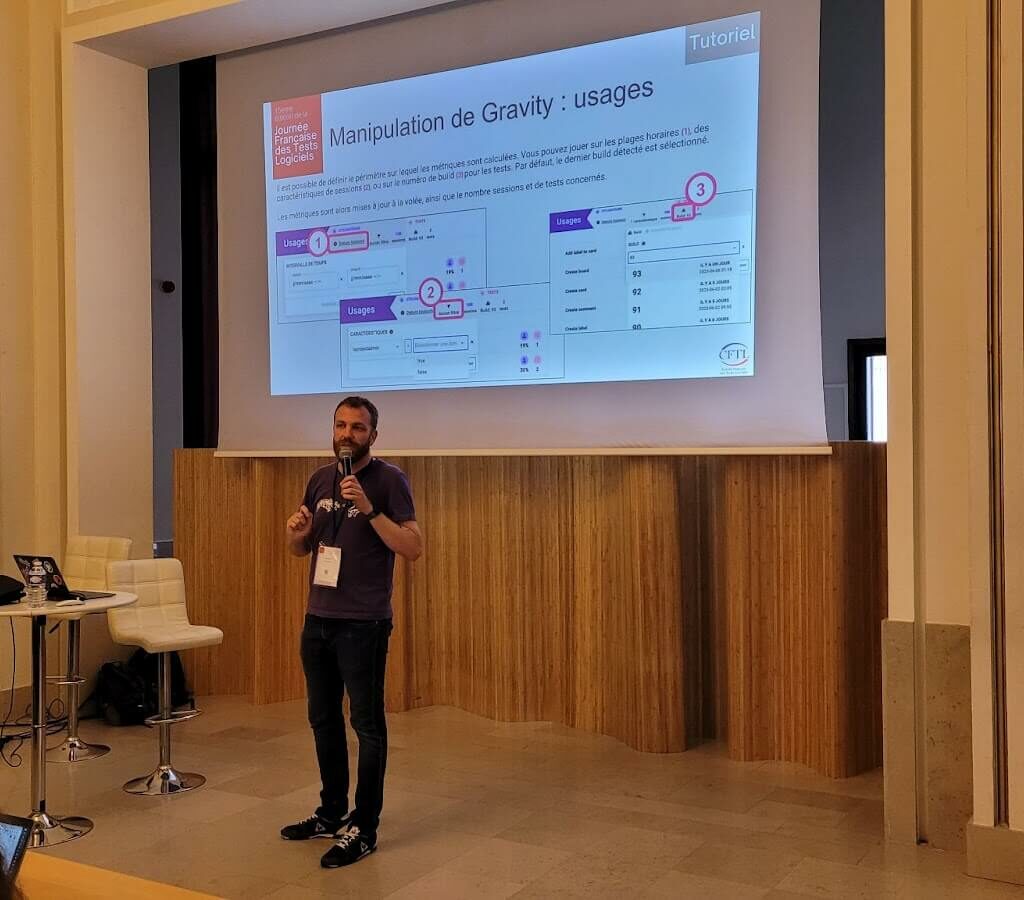
After exporting and running the Cypress test, we could see the metrics update on Gravity and see that an usage had now been covered. The objective was to realize that it is much simpler to take advantage of the concept of Usage-centric Testing with a tool such as Gravity.
So, despite a few glitches caused by the microphone, we think that this tutorial gave participants a good understanding of the concept of Usage-centric Testing and an insight into Gravity, so that they can apply this concept as effectively as possible!
The conference
JFTL was also an opportunity to present the Usage-centric Testing approach during a conference. Julien Botella spoke about “How to well dimension our automated end-to-end test suite” on Tuesday afternoon. The room could initially have a 100 people capacity, but finally, about 150 persons attended this speech. Here again, we figured out how the topic concerns a lot of people/teams.
Julien started by introducing end-to-end testing based on the ISTQB definition: “A type of testing in which business processes are tested from start to finish under production-like circumstances”. A lot of our customers and partners reported to us their main challenges with end-to-end testing :
- « We have too many tests, and a lot of those test functionalities that are not relevant anymore… »
- « We have limited resources to develop and maintain our E2E tests, we don’t know how to prioritize our test effort… »
- « The number of tests in our test suite grows exponentially… but the number of bugs doesn’t decrease accordingly! »
Those quotes have led us to ask a question: «Could we better target our e2e testing effort? »
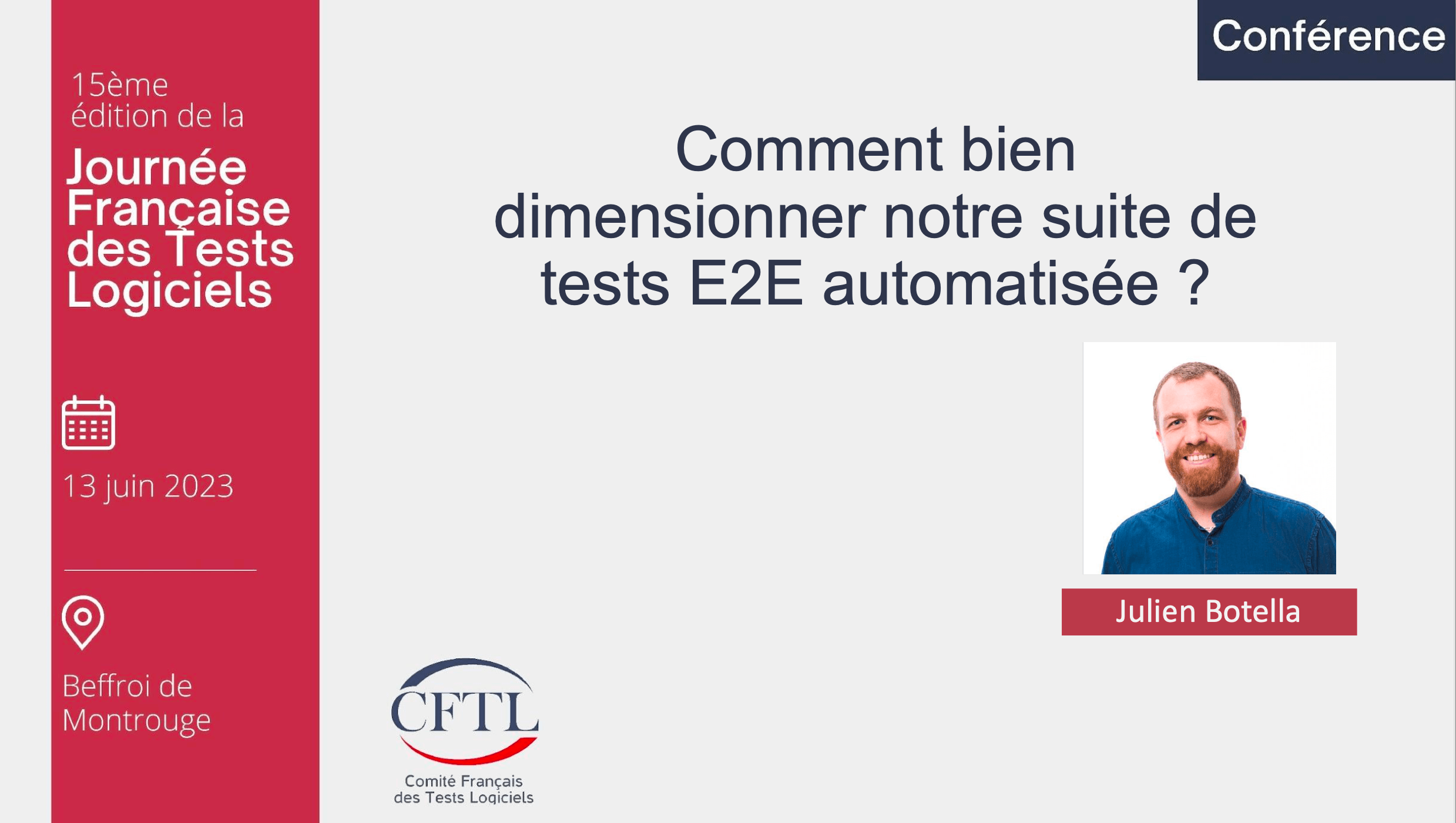
Here comes Usage-centric Testing into the picture.
First, Julien introduced the approach and the feedback we had last year while presenting it. It was the moment to share how several teams already tried to apply Usage-centric Testing manually, using the data provided by their web analytics tools, to compare their end-to-end tests with what their users actually do with their application. Our interlocutors were convinced by the approach, but the lack of efficient tooling to support it led them to stop after a few iterations on their projects.
Then, Julien spoke about the potential of AI to assist Usage-centric Testing, and some tools supporting it. Gravity being one of those, it was the opportunity to show some screenshots to see Usage-centric Testing in action.
Finally, Julien exposed some typical use cases where Gravity shines :
- “Bootstrapping” an end-to-end test suite on an application before refactoring it (application acquisition, legacy migration, …)
- “Optimizing” an end-to-end test suite by removing obsolete existing tests, and adding yet uncovered usages or flows to the tests
Several attendees recognized themselves in those use cases. They stayed after the conference to discuss, share their experience, and learn more about Gravity.
Conclusion
In conclusion, the “Journée Française du Test Logiciel” (French Day of Software Testing) was a successful event (as every year) that brought together professionals in software testing and quality assurance. We can’t wait to attend it again next year.


